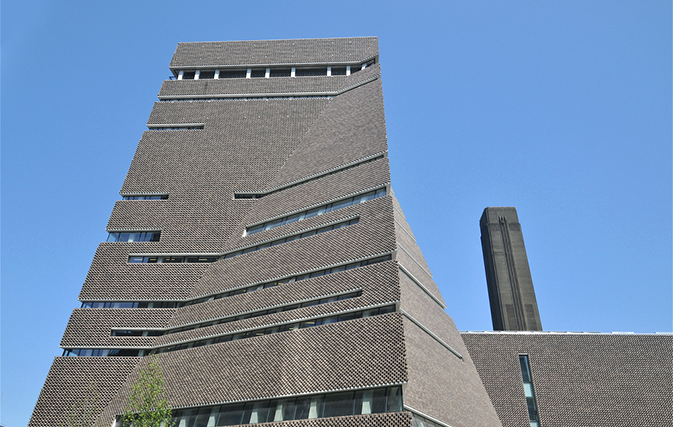LONDON — It’s the disused power station that became an art-world powerhouse, and now London’s Tate Modern is even bigger, with a new 10-story wing to help absorb more than 5 million visitors a year — and more work by women and non-European artists on display.
The gallery beside the River Thames opened in 2000 and succeeded beyond its creators’ wildest dreams, becoming the world’s most visited modern art museum.
Starting Friday, the public can visit its 260 million pound ($367 million) extension, a 10-story, pyramid-shaped structure by Swiss architecture firm Herzog & de Meuron.
It’s a striking building, clad in a lattice of bricks whose texture has been likened to a nubbly old sweater. Inside, rugged concrete columns under soaring ceilings evoke the site’s industrial past. Parts of the old power station have been transformed — concrete tanks that once stored oil are now performance spaces.
Tate Director Nicholas Serota said Tuesday that the gallery now has 60 per cent more space, allowing it “to show a much more diverse range of work than we have previously been able to do.”
“We’re showing work from across the world, not just from northwest Europe and North America,” he said.
“And we’re giving people the opportunity to have a new view of London” from a viewing terrace atop the pyramid.
Tate Modern chief Frances Morris said the gallery’s post-1900 art collection has been rearranged to give a stronger sense of “the ebb and flow of history” and to make links between artists from different parts of the world.
More than a third of the post-1960 artwork on display is by female artists. Morris says the gender imbalance is bigger in the older work because “until recently, it wasn’t a level playing field.”
There’s work by giants of modern art such as Henri Matisse, Pablo Picasso and Mark Rothko in the old building, now known as the Boiler House. The newly built Switch House contains more recent art, in eclectic forms.
“There’s almost everything you can think of, from light and sound through film and video performance to a work made out of car tires,” Morris said. “We even have a work made out of couscous.”
Tate Modern transformed the surrounding neighbourhood, helping to turn a riverside backwater into a hub of arts and nightlife dotted with new luxury apartment towers.
Serota says the revamped gallery expects to attract “a slightly larger number of visitors” than the current 5 million a year. The main aim is to give people room to roam — and spend money, in a new restaurant, bar and gift shop. (Admission to the gallery itself is free).
If there is a cloud on the horizon, it’s the possibility Britain might vote to leave the European Union in a June 23 referendum — a prospect many in the arts world fear could undermine international co-operation.
“This is a museum that presents its face to the world and it’s enjoyed particular collaborations with European colleagues,” Serota said. “We also know that we employ a large number of people here who come from other parts of Europe. And anything that makes that more difficult to do will, I think, diminish the quality of what we’re able to show and do here.”
